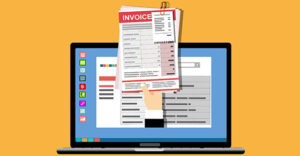
The current calendar year is winding down and a fresh 12 months lies ahead. That makes now a good time to think about how you should present yourself to customers and prospects next year.
The U.S. economy has undergone notable change in 2022. Namely, rising inflation and persistent supply chain challenges have forced companies to really contemplate how they want to do business. Your marketing strategy for 2023 should reflect “the new you” — a business that’s nimbly adjusted to the revised playing field and can still offer customers great value.
Address the audience
A good place to start is with your audience. To whom will you market your business? Consider each prospect, existing customer or targeted group as an investment. Estimate your net profit after subtracting production, sales and customer service costs.
More desirable customers will buy a sizable volume with enough frequency to provide a steady revenue stream rather than serve as just a one-time or infrequent buyer. They’ll also be potential targets for cross-selling other products or services to generate incremental revenue.
Bear in mind that you must have the operational capacity to fulfill prospects’ and customers’ demands. If not, you’ll have to expand your operations, costing you more in resources and capital.
Also, be wary of becoming too dependent on a few large customers. They can use this status as leverage to lowball you. Or, if they decide to pull the plug, it could be financially devastating.
Confront the pricing conundrum
Another key factor to address is pricing. It’s a tricky balance: Setting your price low may help to attract customers, but it can also minimize or even eliminate your profit margin.
What’s worse, inflation has thrown a wild card into this conundrum. Your expenses have likely risen, which could very well mean you have to adjust prices upward. But if customers and prospects get the impression you’re raising prices unreasonably, business could suffer. Your marketing strategy — specifically, communicating price adjustments to customers and prospects — is key to mitigating this risk.
In addition, think about what kind of payment terms you’re prepared to offer and promote in your marketing materials. Sitting on large accounts receivable can strain your cash flow. Strive to establish timely, feasible payment schedules that allow you to sustain your operational capacity and support the bottom line.
Get started
Of course, there are many other aspects of a marketing strategy to consider. But scrutinizing your customer/prospect base and thoroughly analyzing your pricing are good places to start. Contact us for help evaluating the cost impact of marketing, as well as calculating viable price points for your products or services.
© 2022





